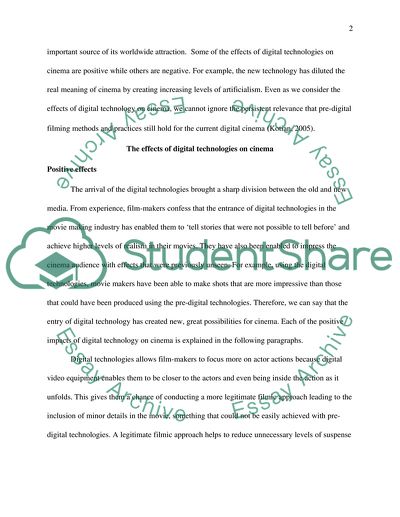Cite this document
(“The Effects of Digital Technologies on Cinema Assignment - 1”, n.d.)
The Effects of Digital Technologies on Cinema Assignment - 1. Retrieved from https://studentshare.org/visual-arts-film-studies/1750772-discuss-the-effects-of-digital-technologies-on-cinema-to-what-extent-are-pre-digital-filmmaking-methods-and-filmmaking-practices-still-relevant-to-digital-cinema
The Effects of Digital Technologies on Cinema Assignment - 1. Retrieved from https://studentshare.org/visual-arts-film-studies/1750772-discuss-the-effects-of-digital-technologies-on-cinema-to-what-extent-are-pre-digital-filmmaking-methods-and-filmmaking-practices-still-relevant-to-digital-cinema
(The Effects of Digital Technologies on Cinema Assignment - 1)
The Effects of Digital Technologies on Cinema Assignment - 1. https://studentshare.org/visual-arts-film-studies/1750772-discuss-the-effects-of-digital-technologies-on-cinema-to-what-extent-are-pre-digital-filmmaking-methods-and-filmmaking-practices-still-relevant-to-digital-cinema.
The Effects of Digital Technologies on Cinema Assignment - 1. https://studentshare.org/visual-arts-film-studies/1750772-discuss-the-effects-of-digital-technologies-on-cinema-to-what-extent-are-pre-digital-filmmaking-methods-and-filmmaking-practices-still-relevant-to-digital-cinema.
“The Effects of Digital Technologies on Cinema Assignment - 1”, n.d. https://studentshare.org/visual-arts-film-studies/1750772-discuss-the-effects-of-digital-technologies-on-cinema-to-what-extent-are-pre-digital-filmmaking-methods-and-filmmaking-practices-still-relevant-to-digital-cinema.


